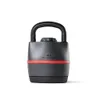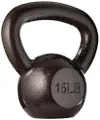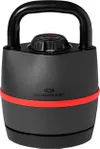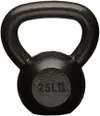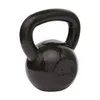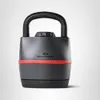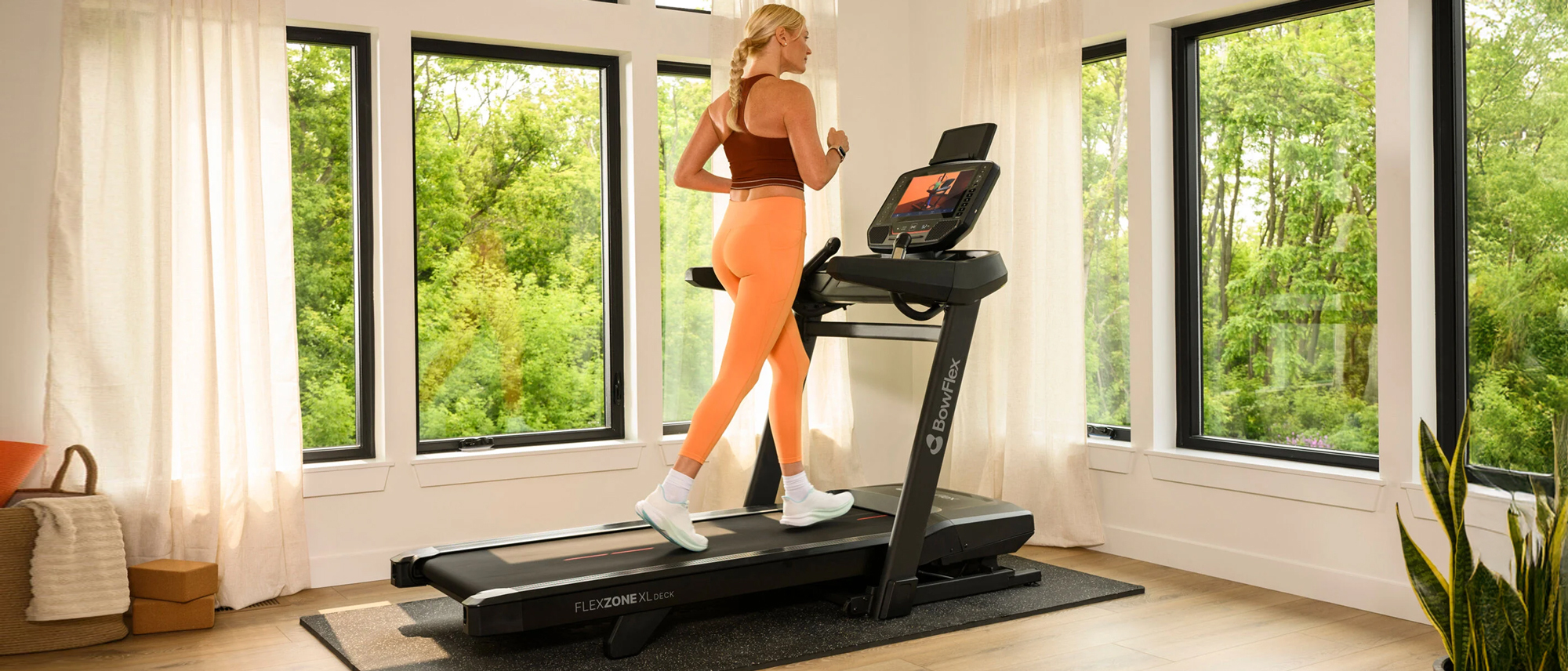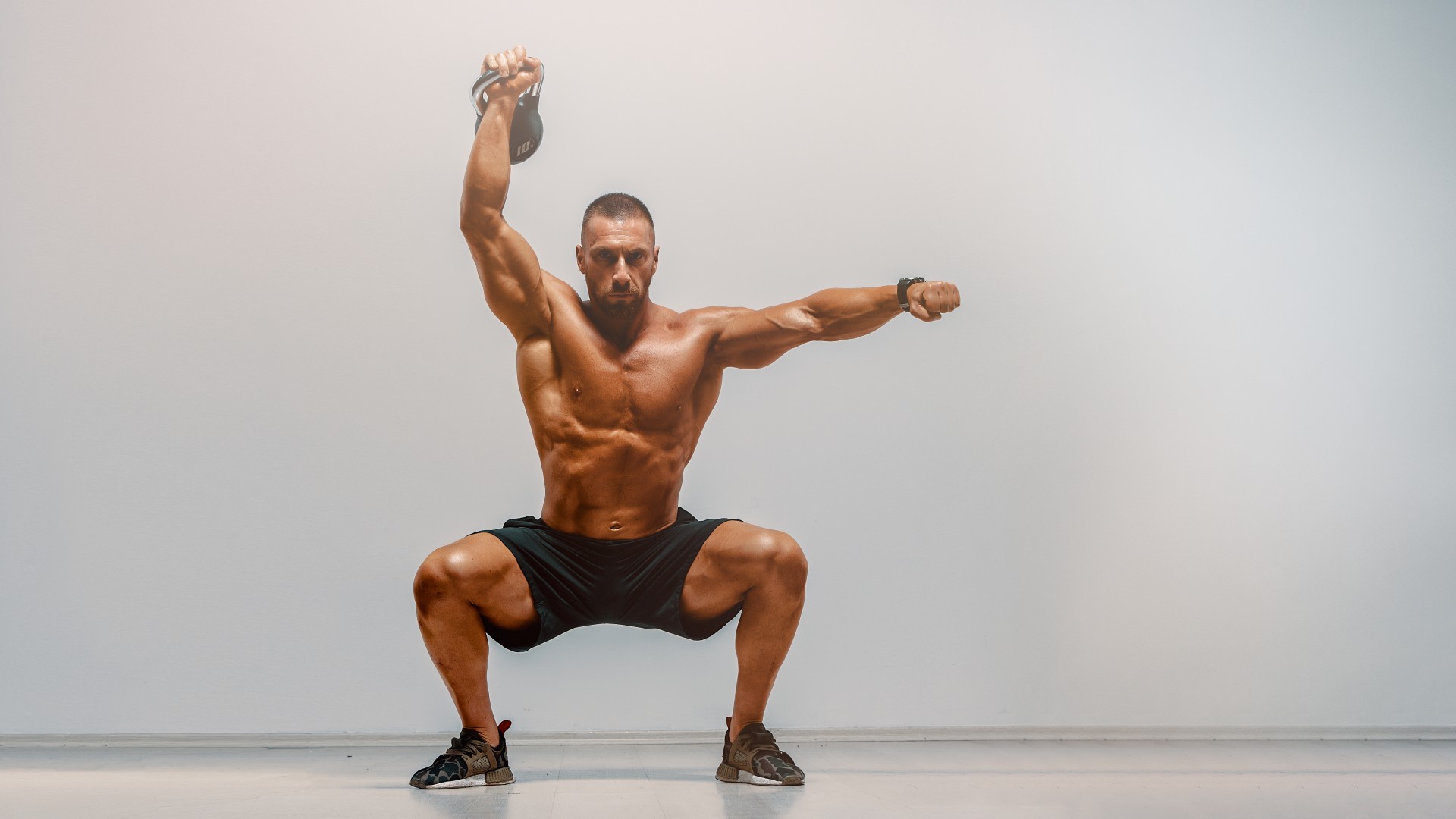
Build core muscle and strengthen your legs and glutes with just a pair of kettlebells, five exercises and a 25-minute workout.
For those looking to carve out a quick kettlebell workout between meetings, during lunchtime, or the last thing you do at night (which is the best time to exercise for sleep, by the way), you only need a set of the best kettlebells and 25 minutes. At Tom’s Guide, our workouts are accessible for all abilities and fitness levels; you don’t need to put aside hours to do them.
Check out the kettlebell routine below, plus how to do each exercise and what muscles you’ll target. If you’re currently working with an injury, or returning to exercise, we recommend clearing a new exercise regime with a relevant medical or fitness professional first.
What is the 5-move kettlebell workout?
Each exercise hits the quads, hamstrings, glutes, calves and hip flexor muscles while recruiting various core muscles like the obliques (muscles that run down your waist and support rotation and lateral motion), rectus abdominis (think six-pack) and transversus abdominis (deeper belt of core muscles responsible for stabilization).
We love compound exercises (multi-joint, multi-muscle moves) that build and strengthen multiple muscle groups; they teach your body to work harmoniously, strengthening coordination, balance and stability. And this workout ticks all the compound boxes.
Sure, none of these moves are typical ab exercises, but that doesn’t mean your core muscles aren’t working hard to support the kettlebells while you move. In fact, compound exercises are the best exercises for building strength and muscle and building stability.
If you’re new to kettlebell training, we recommend giving our guide on how to hold a kettlebell a quick read to help you get to grips with your movement patterns.
Get instant access to breaking news, the hottest reviews, great deals and helpful tips.
25-minute EMOM x 5 rounds:
- Minute 1: Thruster x 8 reps
- Minute 2: Kettlebell swing x 12 reps
- Minute 3: Cossack squat x 10 reps (5 per leg)
- Minute 4: Curtsy lunge x 10 reps (5 per leg)
- Minute 5: Squat clean x 10 reps
- Add one rep per round
Set a rolling 25-minute timer, complete eight kettlebell thrusters, then rest for the remainder of the minute. On the second minute, complete 12 kettlebell swings, then rest. Continue through each exercise until you finish minute five — that’s one round — then start from the top. Complete five rounds.
Reps are guidelines only, so scale them up or down accordingly. Here’s the catch: try to add one rep to each exercise per round, so that by round five you’ve completed 12 thrusters and so on. Aim for 10 to 15 seconds of rest before the next minute begins, which should help you choose rep ranges, but remember, your muscles will begin to fatigue, so also find a rep range you can maintain.
We recommend using a medium-heavy set of kettlebells, or if you only have one weight, work single-sided and switch arms.
What are the 5 kettlebell exercises?
Here are the moves to follow.
Kettlebell thruster
Of course, you can substitute weights, but if you choose to use kettlebells, ensure they stay racked up at your shoulders with your elbows slightly lifted and sit low into the squat with thighs parallel to the floor in the bottom position.
Kettlebell swing
The kettlebell swing is a staple full-body exercise with a strong core focus and works the posterior chain muscles responsible for stabilization and posture. You'll mostly feel the move in your stomach, hips, lower back, glutes and hamstrings. Try to use a hip snap as you stand and drive the weight upward, extending through the hips and giving the glutes a gentle squeeze. If you find the weight mostly working your arms, your hip hinge might need some work, so go lighter until you perfect your form.
Cossack squat
For anyone new to Cossack squats, we strongly recommend using your bodyweight (above) until you can sit low enough into the squat without lifting your heel or rounding your back. Once you feel balanced enough, try holding a kettlebell with both hands in front of your chest using a goblet squat hold or you can use the front rack position by racking a kettlebell onto each shoulder and lifting your elbows.
Curtsy lunge
We demonstrate above using dumbbells, but you can easily switch out to kettlebells. Hold the weights by your sides or rest them in the front rack position with your elbows lifted, depending on preference. Lower your back knee down to the ground to avoid half reps, and if you struggle to nail the curtsy, imagine drawing a semi-circle with your toes as you sweep your leg back to lunge.
Squat clean
If you're not used to working with kettlebells, use one weight and switch sides. Once you feel comfortable with the kettlebell clean, the move will start to flow better. Move from the clean to the squat without pausing at the top or making them two separate moves. Use an overhand grip on the handles, palms facing each other, and rotate the bells to the outsides of the arms as you rack them to the shoulders, squatting as you do.
Benefits of the kettlebell workout
There are plenty of ways to build muscle without lifting heavier weights. For example, slowing an exercise down during one or both phases of a move can help utilize a weightlifting technique called time under tension — a fancy fitness term for working muscles for longer through a range of motion.
During this workout, you’ll be held accountable to a time cap of one minute per move, so time under tension isn’t that easy to adopt, but if you’re using lighter weights or working single-sided, dropping the reps and increasing the time spent lifting the weight can help overload the muscles and increase intensity.
If you choose to go this way, I recommend only using it for the curtsy lunges and Cossack squats, as the other kettlebell exercises require explosive muscular power throughout. Count 3 to 4 seconds as you lower into the squat or lunge, then drive upward through your feet to stand to one count.
High workout volume can help overload and fatigue muscles, so this workout should start to feel spicy by the third round. Just remember to keep your form tight, rest at the end of the reps and hold your pace, otherwise, 25 minutes will feel like a lifetime.
More from Tom's Guide
- I did 7-minute abs wheel planks every day for a week — here’s what happened to my body
- Forget weights — use this 5-move bodyweight workout to sculpt your upper body
- Build muscle all over and boost your metabolism in just 40 minutes with this full-body dumbbell workout

Sam Hopes is a level 3 qualified trainer, a level 2 Reiki practitioner and fitness editor at Tom's Guide. She is also currently undertaking her Yoga For Athletes training course.
Sam has written for various fitness brands and websites over the years and has experience across brands at Future, such as Live Science, Fit&Well, Coach, and T3.
Having coached at fitness studios like F45 and Virgin Active and personal trained, Sam now primarily teaches outdoor bootcamps, bodyweight, calisthenics and kettlebells.
She also coaches mobility and flexibility classes several times a week and believes that true strength comes from a holistic approach to training your body.
Sam has completed two mixed doubles Hyrox competitions in London and the Netherlands and finished her first doubles attempt in 1:11.
